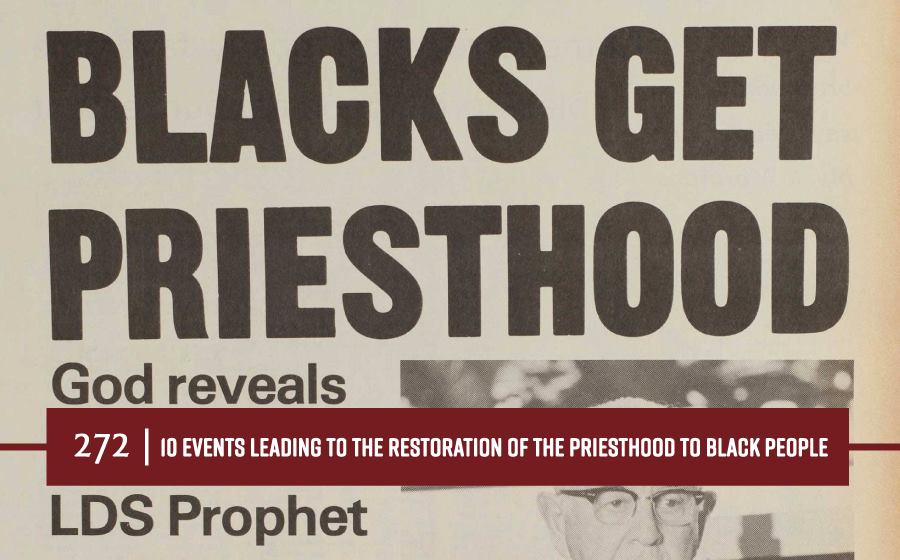1. Evening and Morning Star Incident with “Free People of Ccolor” (1833). Missouri persecutions prompted Latter-day Saints to position themselves as more anti-black.
2. Joseph Smith authorizes ordination of Elijah Able (1836). Elijah Able becomes the first, documented priesthood holder in LDS history.
3. William McCary Episode. Black traveling musician William McCary scandalizes the LDS community when he tries to implement interracial polygamy; Parley P. Pratt responded with the first, top-level statement connecting racial identity to priesthood worthiness.
4. Brigham Young’s support for bonded service/public support for priesthood ban (1852). Brigham Young first articulates his support for bonded servitude (i.e. an ambiguous form of enslavement) and publicly articulates his support for the priesthood restriction (although he had backed black ordination in 1847).
5. Canonization of Pearl of Great Price (1880). Canonizing the Pearl of Great Price involved canonizing verses from the Book of Abraham on Ham’s curse; these verses served as supporting texts for justification of the restrictions for three generations.
6. Establishment of Brazil mission (1920s). When Mormon missionaries were first called to Brazil, they were instructed to preach only to the German colonies in the South known to avoid intermarriage with African populations; the establishment of this mission placed the LDS church face-to-face with the likelihood of African integration.
7. Wyoming and Stanford football boycotts/protests (’69). The protests of Stanford University and the University of Wyoming against BYU over its close affiliation with the LDS Church brought the priesthood/temple restrictions into the public eye to a greater degree.
8. Rise of Mormon groups in Ghana and Nigeria (1950s/1960s). When Nigerians and Ghanaians established self-identified Mormon groups, Mormon officials visited to assess their viability in 1960-1961. Their exposure to these groups convinced them that the priesthood ban’s lifespan would be short-lived.
9. Dedication of São Paulo temple (1975). The dedication of the Sao Paulo Temple in Brazil highlighted the difficulty the Church faced in manning a fully-functioning church without having African-descended priesthood holders administering in the temple.
10. 1978 declaration. The release of the statement came after many years of wrangling, false starts, and proposed policy changes.
Podcast: Play in new window | Download
Subscribe: RSS

